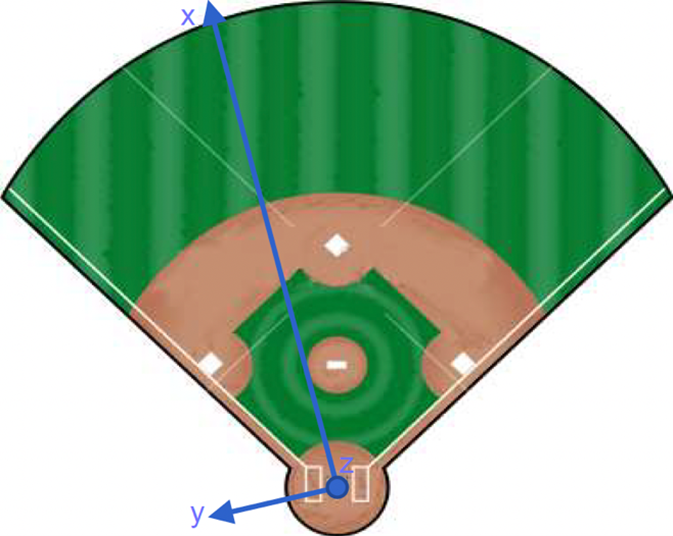(Completed: 2010)
Overview
During batting practice at a major league development team facility located in a municipal multi-use park with a common parking lot, balls often cleared the outfield fence. On one occasion, a ball struck a six-week-old infant in the face while being buckled into his car seat leaving a nearby flea market event. The question posed to AKE to investigate was: “What are the odds?” Moreover, a third-party opinion was offered that the outfield fence height should have been 40 feet, so AKE President David Komm, P.E., PEng stepped up to the plate to analyze the situation.
Investigation & Findings
Due to the especially sensitive nature of this case involving an injured infant, this thorough investigation by AKE lasted multiple years. The case kicked off with the plaintiff’s expert claiming – without basis – the fence should have been 40 feet high.
On the opposing side, AKE was to determine the feasibility of the 40-foot requirement and then conclude whether it would have made a difference. The two main variables that came into play were speed and height of the ball departing the field into the parking lot, and then comparing that height against the proposed fence.
Baseball Physics
To address the aforementioned variables, or how far and how high, Komm performed extensive niche research including a study from “The Physics of Baseball” by Robert K. Adair (1994). His findings consisted of analyzing the ball’s 1) Exit Velocity and 2) Angle. Secondarily, his studies considered the ball rotation and atmospheric conditions including temperature, humidity level, elevation, and wind direction/magnitude.
Ball Field Coordinate Systems

x,y,z fixed Cartesian coordinate system for the field and departure trajectory
Equations of Motion
In terms of Equations of Motion, Komm took the approach of simplifying and focusing on post-ball/bat collision dynamics of the baseball alone.

Equations of Motion
– x, y, z are differentiable principal coordinates w.r.t. to time, t
– A is the surface area of the baseball
– Cd is the coefficient of drag for viscous friction in the direction of
travel; an additional Cd effect could be included for any “tailwind”
the ball may encounter
– ρ is the density of air
Energy
From a point of view of energy, he discovered that the ball traveled a distance of 420 feet to the parking lot. At the optimum angle, the departure speed (leaving the bat) of the ball would have had to have been at least 102.5 mph. For any departure speed above the minimum, there are multiple solutions via variations of a Pop Fly and Line Drive.
By varying the departure speeds above 102.5 mph and the departure angles, multiple solutions were found that traveled 420 feet. To use baseball terms, both lazy and sky-high pop flies would clear the proposed 40-foot fence. For line drives, those with relatively lower departure speeds and higher departure angles cleared the fence, but those screaming long-line drives would not.
Taking all solutions into account, it was found the majority of balls that traveled 420 feet would clear a 40-foot fence at the outfield.
Minimum Energy Required

Conclusions
In the unique case of a hit baseball striking an infant across the field into the parking lot, AKE determined the following: The ball departed the bat at a speed of at least 102.5 mph. It is likely to have been greater. To put this into perspective, the average speed for a major league player at any type of hit is 90 mph, with a minimum of about 95 mph for home runs. Furthermore, the 2023 National League MVP, Ronald Acuña Jr., achieved the hardest-hit home run of the year at 121.2 mph.
At any rate, AKE concluded that at that 102.5 mph departure speed, a fence of 57 feet (almost 6-story building) would have been necessary to stop the ball, rather than the 40-foot ballpark figure that was provided by an external source. Komm’s analysis of all trajectories revealed that more than 50% of balls traveling 420 feet would clear a 40-foot fence, proving that it would not have prevented this incident from occurring.
The real Home Run in this case was that there had been no indication that the child suffered any type of injury years later and an education fund had been established by the various parties involved. Concern for the child’s wellbeing was the highest priority of all parties as evidenced by the arbitration with Komm explaining his thorough analysis to help reach an understanding rather than needing to take it to court.

